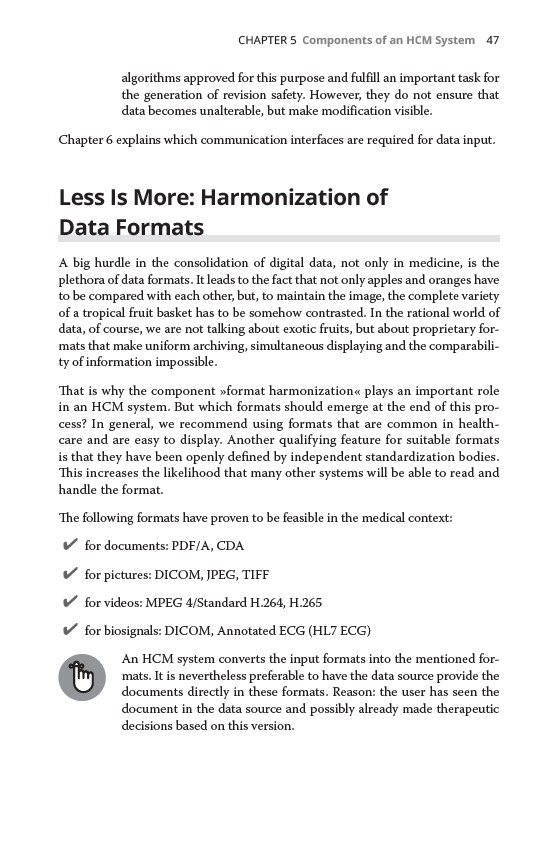
CHAPTER 5 Components of an HCM System 47
algorithms approved for this purpose and fulfill an important task for
the generation of revision safety. However, they do not ensure that
data becomes unalterable, but make modification visible.
Chapter 6 explains which communication interfaces are required for data input.
Less Is More: Harmonization of
Data Formats
A big hurdle in the consolidation of digital data, not only in medicine, is the
plethora
of data formats. It leads to the fact that not only apples and oranges have
to be compared with each other, but, to maintain the image, the complete variety
of a tropical fruit basket has to be somehow contrasted. In the rational world of
data, of course, we are not talking about exotic fruits, but about proprietary formats
that make uniform archiving, simultaneous displaying and the comparability
of information impossible.
That is why the component »format harmonization« plays an important role
in an HCM system. But which formats should emerge at the end of this process?
In general, we recommend using formats that are common in healthcare
and are easy to display. Another qualifying feature for suitable formats
is that they have been openly defined by independent standardization bodies.
This increases the likelihood that many other systems will be able to read and
handle the format.
The following formats have proven to be feasible in the medical context:
✔✔ for documents: PDF/A, CDA
✔✔ for pictures: DICOM, JPEG, TIFF
✔✔ for videos: MPEG 4/Standard H.264, H.265
✔✔ for biosignals: DICOM, Annotated ECG (HL7 ECG)
An HCM system converts the input formats into the mentioned formats.
It is nevertheless preferable to have the data source provide the
documents directly in these formats. Reason: the user has seen the
document in the data source and possibly already made therapeutic
decisions based on this version.